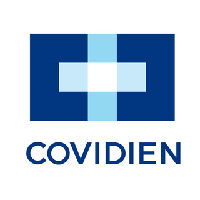预约演示
更新于:2025-05-07
Chylous Ascites
乳糜腹
更新于:2025-05-07
基本信息
别名 ASCITES, CHYLOUS、Ascites chylous、Ascites, Chylous + [28] |
简介 Presence of milky lymph (CHYLE) in the PERITONEAL CAVITY, with or without infection. |
关联
1
项与 乳糜腹 相关的药物靶点- |
作用机制 诊断染料分子 |
在研机构- |
在研适应症- |
最高研发阶段撤市 |
首次获批国家/地区 美国 |
首次获批日期1981-07-29 |
3
项与 乳糜腹 相关的临床试验NCT06820320
Oral Iohexol in the Management of Chylous Ascites After Retroperitoneal or Extended Lymphadenectomy for Abdominal or Pelvic Malignant Tumor: an Innovative and Convenient Treatment
The goal of this clinical trial is to assess the effectiveness of oral iohexol in the treatment of postoperative chylous ascites. It will also learn about the safety of oral iohexol. The main questions it aims to answer are:
* Confirm the potential of oral iohexol as an innovative therapeutic regimen.
* Confirm its ability to improve clinical outcomes for patients.
* Confirm the potential of oral iohexol as an innovative therapeutic regimen.
* Confirm its ability to improve clinical outcomes for patients.
开始日期2025-02-15 |
申办/合作机构 |
ChiCTR2100041723
The effect of TPN combined with somatostatin in the treatment of chylous leakage after D3 radical resection for colorectal cancer: a Single-center, Prospective, Observational Clinical Trial
开始日期2021-02-01 |
申办/合作机构 |
JPRN-UMIN000021762
Prospective study on the effectiveness assessment of Indocyanine Green Lymphography and Lymphatic Surgery for lymphedema and lymphatic disease. - Prospective study on the effectiveness assessment of Indocyanine Green Lymphography and Lymphatic Surgery for lymphedema and lymphatic disease.
开始日期2016-04-01 |
申办/合作机构- |
100 项与 乳糜腹 相关的临床结果
登录后查看更多信息
100 项与 乳糜腹 相关的转化医学
登录后查看更多信息
0 项与 乳糜腹 相关的专利(医药)
登录后查看更多信息
1,951
项与 乳糜腹 相关的文献(医药)2025-12-01·Techniques in Coloproctology
Focusing on chylous ascites: a noteworthy complication after laparoscopic/robotic para-aortic lymphadenectomy in left-sided colorectal cancer in a high-volume single center
Article
作者: Wang, X ; Sun, Y ; Huang, Y ; Xu, Z ; Tang, Z ; Chi, P
2025-05-01·Pediatric Nephrology
Chyloperitoneum in a toddler on peritoneal dialysis
Article
作者: Bell, Veronica Lavelle ; Benedetti, Daniel J ; Schlotman, Alyssa A ; Hunley, Tracy E
2025-05-01·Journal of Veterinary Internal Medicine
Prospective Estimation of the Prevalence of Thromboembolism in Dogs With Inflammatory Protein‐Losing Enteropathy
Article
作者: Miyoshi, Kenjiro ; Hanazono, Kiwamu ; Oishi, Nene ; Ohta, Hiroshi ; Tamura, Masahiro ; Yokoyama, Nozomu ; Shinbo, Genya
1
项与 乳糜腹 相关的新闻(医药)2024-11-05
TUESDAY, Nov. 5, 2024 -- Open primary retroperitoneal lymph node dissection (RPLND) has an acceptable morbidity profile in men with
testicular cancer
, according to a study published online Sept. 3 in
BJU International
.
Jacob D. McFadden, M.D., from the Indiana University School of Medicine in Indianapolis, and colleagues characterized current perioperative outcomes and short-term complication rates for open primary retroperitoneal lymph node dissection. The analysis included 165 patients undergoing
surgery
from 2018 to 2021.
The researchers found that patients most often had clinical stage IIA (39 percent) or IIB testicular cancer (36 percent). No transfusions were required, and median estimated blood loss was 150 mL. Compared with normal recovery, higher body mass index (median, 28.6 kg/m
2
) was seen in patients who sustained any complication. Three days was the median length of hospital stay. There was a low overall complication rate (8.48 percent), with two major postoperative complications, including one case of chylous ascites (0.6 percent). No deaths were seen in the 30-day period.
"While contemporary reports on the robotic approach to primary RPLND indicate feasibility and potential benefits with respect to blood loss and hospital stay, our report suggests that the open approach remains the ‘gold standard’ by most peri-operative metrics," the authors write.
临床结果
分析
对领域进行一次全面的分析。
登录
或

Eureka LS:
全新生物医药AI Agent 覆盖科研全链路,让突破性发现快人一步
立即开始免费试用!
智慧芽新药情报库是智慧芽专为生命科学人士构建的基于AI的创新药情报平台,助您全方位提升您的研发与决策效率。
立即开始数据试用!
智慧芽新药库数据也通过智慧芽数据服务平台,以API或者数据包形式对外开放,助您更加充分利用智慧芽新药情报信息。
生物序列数据库
生物药研发创新
免费使用
化学结构数据库
小分子化药研发创新
免费使用


